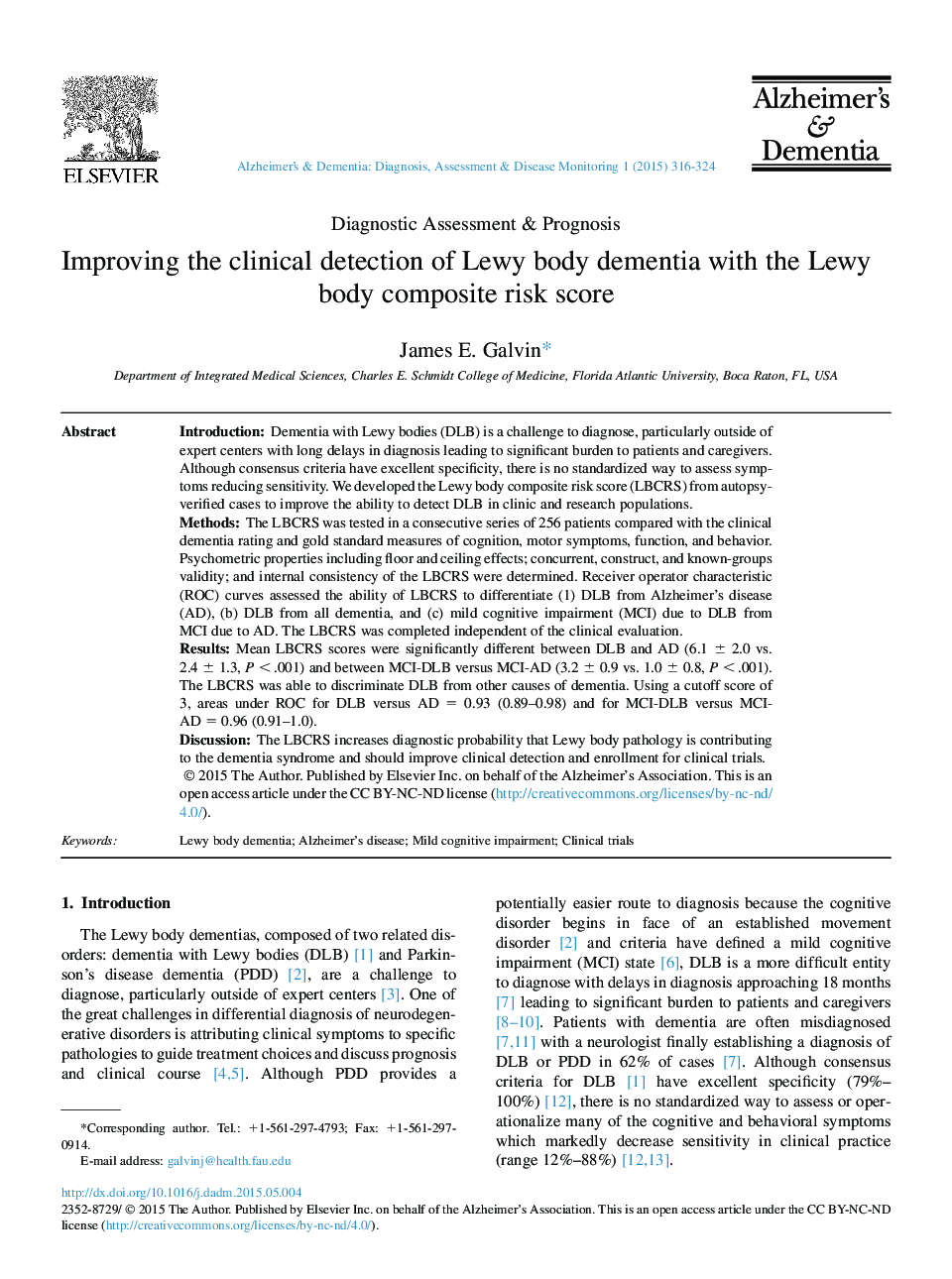| Article ID | Journal | Published Year | Pages | File Type |
|---|---|---|---|---|
| 3032062 | Alzheimer's & Dementia: Diagnosis, Assessment & Disease Monitoring | 2015 | 9 Pages |
IntroductionDementia with Lewy bodies (DLB) is a challenge to diagnose, particularly outside of expert centers with long delays in diagnosis leading to significant burden to patients and caregivers. Although consensus criteria have excellent specificity, there is no standardized way to assess symptoms reducing sensitivity. We developed the Lewy body composite risk score (LBCRS) from autopsy-verified cases to improve the ability to detect DLB in clinic and research populations.MethodsThe LBCRS was tested in a consecutive series of 256 patients compared with the clinical dementia rating and gold standard measures of cognition, motor symptoms, function, and behavior. Psychometric properties including floor and ceiling effects; concurrent, construct, and known-groups validity; and internal consistency of the LBCRS were determined. Receiver operator characteristic (ROC) curves assessed the ability of LBCRS to differentiate (1) DLB from Alzheimer's disease (AD), (b) DLB from all dementia, and (c) mild cognitive impairment (MCI) due to DLB from MCI due to AD. The LBCRS was completed independent of the clinical evaluation.ResultsMean LBCRS scores were significantly different between DLB and AD (6.1 ± 2.0 vs. 2.4 ± 1.3, P < .001) and between MCI-DLB versus MCI-AD (3.2 ± 0.9 vs. 1.0 ± 0.8, P < .001). The LBCRS was able to discriminate DLB from other causes of dementia. Using a cutoff score of 3, areas under ROC for DLB versus AD = 0.93 (0.89–0.98) and for MCI-DLB versus MCI-AD = 0.96 (0.91–1.0).DiscussionThe LBCRS increases diagnostic probability that Lewy body pathology is contributing to the dementia syndrome and should improve clinical detection and enrollment for clinical trials.
